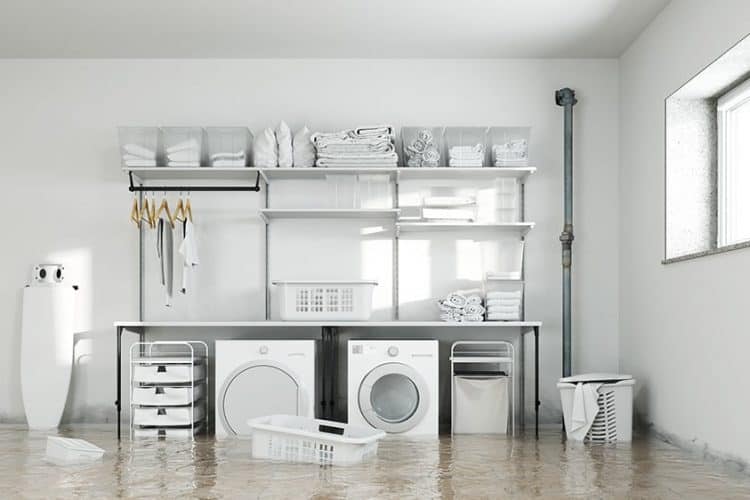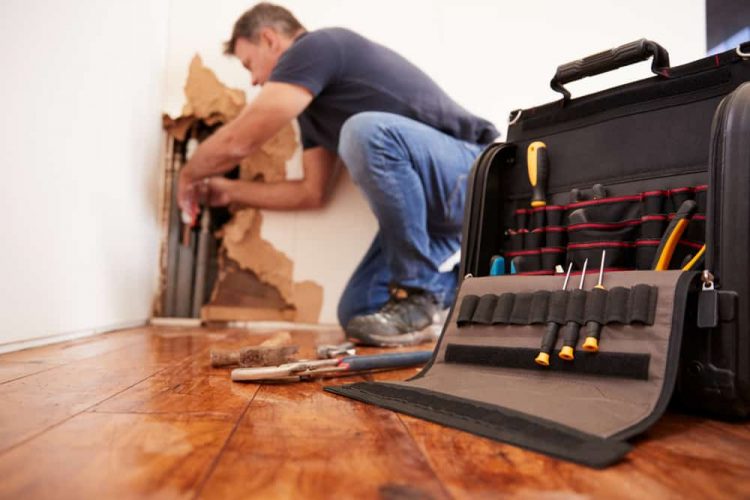
That said, there are certain measures you can take to decrease the likelihood of flooding inside your home and help minimize flood damage. Based on our experience with flooded properties, here are some tips to protect a home from flooding and advice on what to do if a flood has impacted your home.
So, if you’re interested in learning how to flood-proof a house or how to keep water out of your house, you’re in the right place!

NOTE: This is only intended as an overview of basic recommendations for helping prevent water damage during minor flooding. To fully understand your home or business’s flood risk and explore resources to help you best navigate that risk, we recommend checking out FEMA’s in-depth guide, “Know Your Flood Risk: Homeowners, Renters or Business Owners.”
-
Preparing the Outside of Your House
Whether the home you want to protect from flooding is a new build or an existing home, there are some ways the outside of your property can help with flood prevention and avoid the need for water damage cleanup.
New Builds
When building a home, elevation and location are your two best tools for improving flood resistance. Ensuring it’s sufficiently elevated and built back from river channels and shorelines is an excellent first step in safeguarding your home against potential flood waters. In many flood-prone areas, local building codes and standards may already require new construction homes to be raised above specific flood levels.
Landscaping is another key feature for preventing flooding inside your home. Yards should be properly graded to allow water to drain away from your house and foundation. Plants, trees, and shrubs should also be installed to absorb more water, minimize runoff, and reduce erosion.
Mature trees and group plantings are particularly beneficial because more extensive and established root systems are better for promoting drainage. Even if your new home is not in a high-risk flood area, you can, and should, still design and utilize landscaping to drain water away from your house.
Existing Homes
Following the same landscaping recommendations for homes that are already built can ensure the exterior of your house will be the first line of defense against flooding. There are also some important exterior property maintenance tasks that should be done regularly to deter water from leaking into your home:
- Windows and doors: Check for cracks and gaps and seal them. Remember to check the weatherstripping regularly on both because it can warp or deteriorate over time.
- Roof: Inspect your roof for missing or broken shingles. If you are worried or suspect any problems, contact a qualified roofing company to conduct a full roof inspection. Take care of any roofing issues right away.
- Downspouts and Gutters: Ensure downspouts, gutters, and gutter guards are free of debris and aimed away from the house, so water can drain easily and be directed away from the foundation of your home. Add downspout extensions if water is pooling right next to your foundation.
Preparing the Inside of Your House
Flood-proofing the interior of a house is largely about minimizing the damage that can be caused if or when flooding occurs. Whether you’re concerned about new construction or an existing house, you can prepare the inside of your home to handle a flood situation in several ways.
New Build Interiors
Elevate utilities and appliances. Best practice is to elevate mechanical units, furnaces, water heaters, electrical systems, and other utilities on masonry, concrete, or pressure-treated lumber at least 12 inches above the base flood elevation (BFE).
Install a sump pump. Sump pumps are often added or upgraded in existing homes after a basement experiences flooding. If you’re building a new home, however, installing a sump pump from the start is a proactive way to prepare for and prevent any future flooding in the basement.
Existing Home Interiors
For existing homes, there are still some effective ways to minimize flood damage when flooding does occur:
- Flooring: Replace carpeting with tiles.
- Reseal and waterproof the basement: Over time, cracks can develop in foundations or floor slabs, which can allow water to start leaking into a previously dry basement. Even cement floors and walls can deteriorate!
- Inspect appliances: Appliances are a common culprit of plumbing-related floods. Inspect your appliances regularly to ensure there are no cracks or leaks. Check the hoses and supply lines of water heaters, dishwashers, washing machines, refrigerator ice makers, and any other appliances connected to water.
- Travel considerations: If you plan to be away, shut off the water supply while you’re on vacation. If someone is staying at your home, be sure they know how to shut off the main water supply in case of emergency.
Additional Steps When a Flood Is Imminent
- Securing yard items: If a flood is anticipated, secure items in the yard (benches, sheds, grills, etc.) in advance.
- Prevention measures: If you have been warned of a flood event, sandbag barriers and boarding up your home can be effective preventative measures to manage flooding. In a crisis, this will help to keep flood water out of your house.
A few last flood preparedness tips: you can lift the furniture off the floor to protect it as much as possible. Pack items in waterproof bins and place them on shelving that’s off the floor. Store any important items or documents off-site.
You’re Flooded. Now What?
Homeowners with the best intentions of flood-proofing a house need to know what to do if their home does become flooded. This is where 1-800 WATER DAMAGE helps property owners get their homes back to a pre-loss, liveable condition.
Our water damage restoration specialists are trained for flood situations and know what remediation tools and processes are necessary to restore a residential property to its pre-loss condition. Our team is fully vetted, IICRC-certified, and insured.
We assess the property in every situation to determine the best restoration solution. Depending on the source of the flood, there can be contaminants in the water that need to be managed in a precise way. Our teams are fully trained and prepared to handle any flood and water damage situation we encounter.
Contact 1-800 WATER DAMAGE for Restoration Services
The professionals at 1-800 WATER DAMAGE can help restore your home following a flood situation. The most important thing is to act quickly to prevent mold from establishing and causing further issues to be addressed.
Contact us by filling out our online form or by calling 800-928-3732. Flood situations are difficult times. Let us help with our restoration services.
-
Request A Quote Or Service Today
What Our Customers Say
How May We Help You? Request Service
Latest News
The Latest News, Restoration Tips & More


